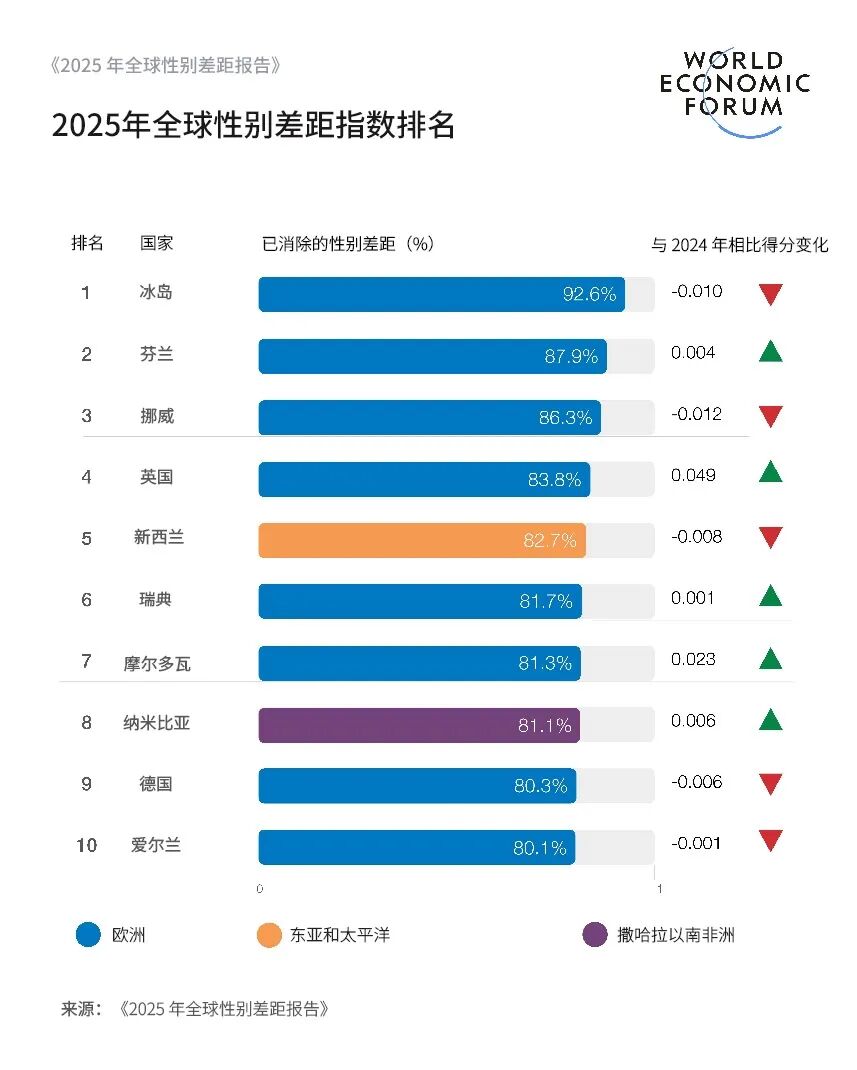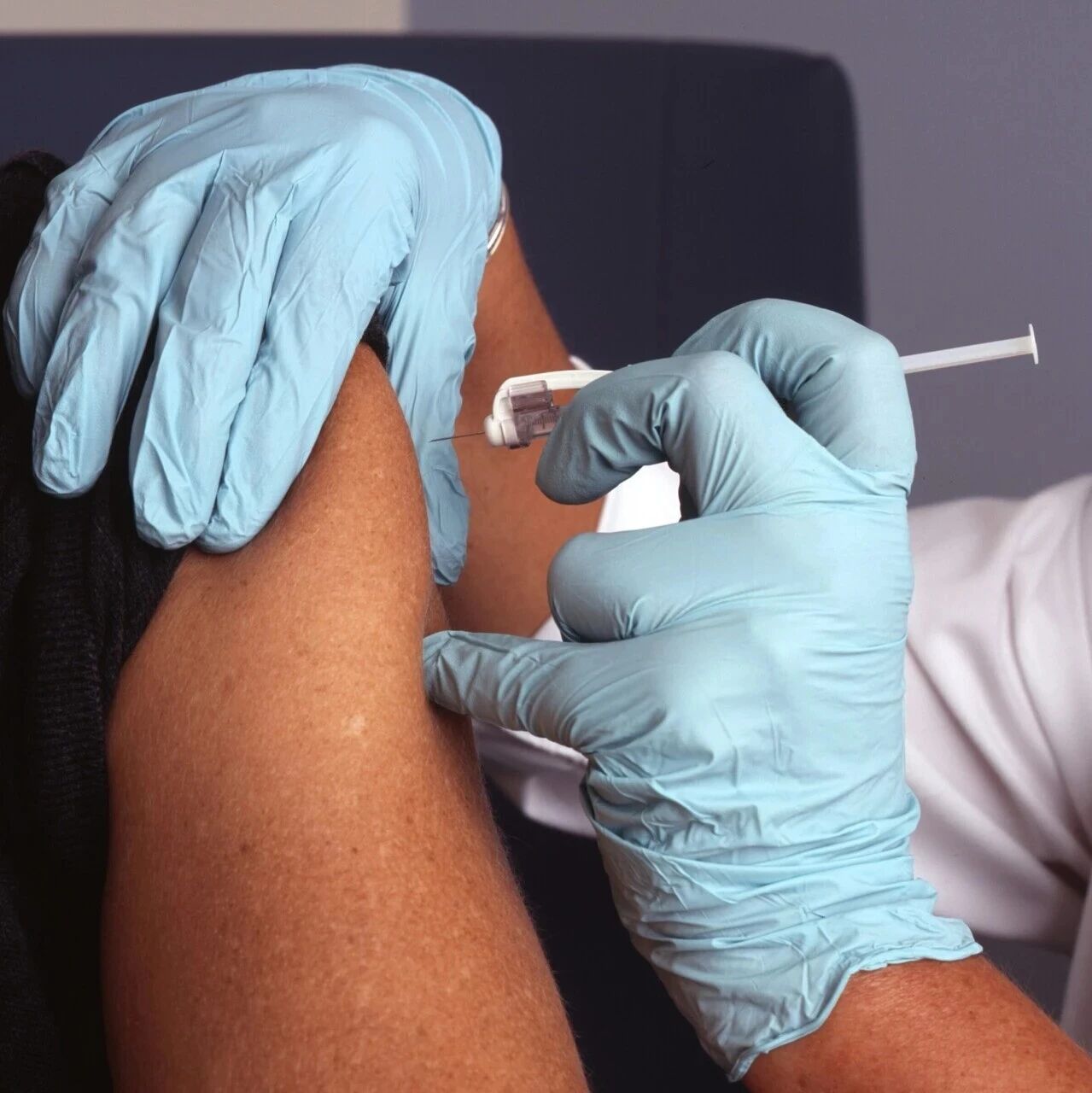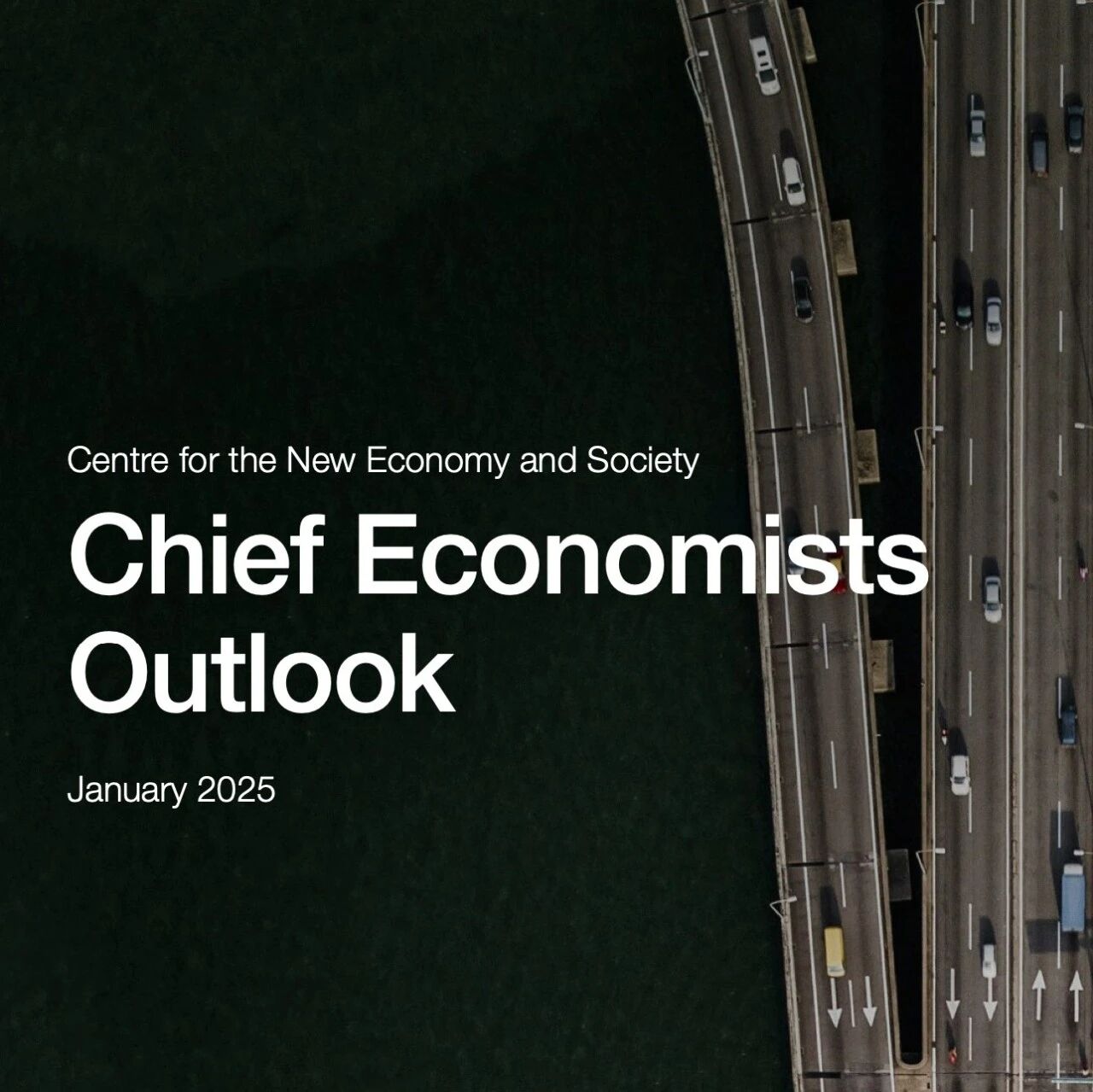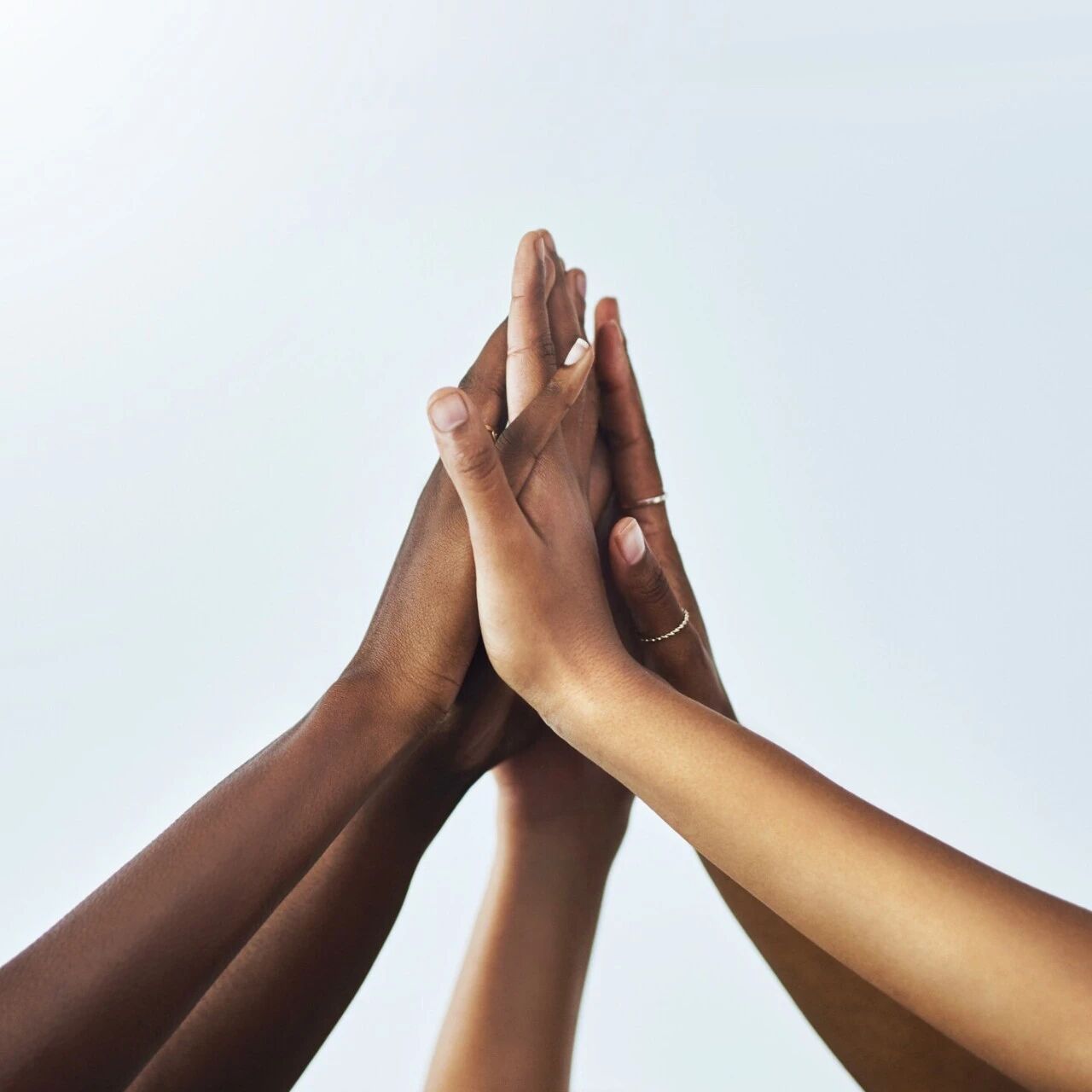Driven by economic and political progress, the global gender gap has narrowed to 68.8%, yet the pace of this advancement remains slower than before the COVID-19 pandemic—and achieving full gender equality is still projected to take an estimated 123 more years.
In the field of higher education, women are advancing faster than men—but only 28.8% have reached senior leadership positions. Amidst a global landscape marked by uncertainty, this disparity is missing opportunities to enhance economic resilience and drive growth.
The area of political empowerment has seen the most significant progress, yet to date, it has closed only 22.9% of the global gap—remaining the biggest obstacle to advancing gender equality worldwide.
Click to read the original article and learn more about the "2025 Gender Gap Report."
The World Economic Forum’s Global Gender Gap Report 2025, released today, reveals that the global gender gap has narrowed to 68.8%, marking the largest annual improvement since the onset of the COVID-19 pandemic. However, at the current rate of progress, achieving full gender equality will still take an estimated 123 years. Iceland tops the ranking for the 16th consecutive year, followed closely by Finland, Norway, the UK, and New Zealand.
This year marks the 19th time the World Economic Forum has released its Global Gender Gap Report. The latest report, which covers 148 economies, highlights both encouraging signs of progress and underscores the deeply entrenched structural barriers women worldwide continue to face. Key advancements this year were driven by significant gains in political empowerment and economic participation, while education and health/survival indicators remained remarkably close to parity—achieving levels above 95%. Yet despite women now making up 41.2% of the global workforce, the gender gap at leadership levels remains strikingly wide, with women occupying just 28.8% of senior leadership positions.
"Amid rising global economic uncertainty, dimming growth prospects, and rapid technological and demographic shifts, advancing gender equality will become a critical driver of economic recovery," said Saadia Zahidi, Managing Director of the World Economic Forum. "The evidence is clear: economies that have made decisive progress on gender parity are positioning themselves to unlock stronger, more innovative, and resilient growth—driving positive change for people and businesses alike."
The Top 10 Economies
Iceland has remained the world’s most gender-equal economy for the 16th consecutive year, closing 92.6% of its gender gap and becoming the only economy to achieve a gender equality score exceeding 90%. Finland (87.9%), Norway (86.3%), the UK (83.8%), and New Zealand (82.7%) round out the second through fifth spots, respectively. Notably, all economies within the top 10 have already eliminated more than 80% of their gender gaps—making them the only nations to have accomplished this critical milestone. Among the top 10 economies, European countries dominate with eight of the positions, including Iceland, Finland, Norway, and Sweden, which have consistently ranked in the top 10 since 2006.

Gender Equality and Economic Progress
The index used in the report examines only the gender gaps reflected in its findings, without analyzing a country’s overall resource levels or opportunities. The index reveals a weak correlation between a nation’s current income level and its gender gap—suggesting that wealthier economies tend to fare slightly better in terms of gender equality. Overall, high-income economies have closed 74.3% of their gender gaps, slightly higher than the average seen in lower-income economies, which stand at 69.6% for upper-middle-income countries, 66.0% for lower-middle-income countries, and 66.4% for low-income economies.
However, this correlation is very weak and does not establish a causal link between the two. Among the three categories of lower-income economies, the best-performing ones have managed to close a significantly higher proportion of the gender gap compared to more than half of the high-income economies. While resources certainly matter, it’s not just wealthy nations that can afford to invest in advancing gender equality—economies at various stages of development are equally capable of integrating gender equity into their strategies for economic growth. Historically, economies that excel in developing and fully leveraging their human capital tend to become more sustainable and prosperous over time. By tapping into their existing talent pool and embracing diverse perspectives, an economy can unlock its creative potential, driving innovation, fostering growth, and boosting productivity.
Regional Score Results
North AmericaRanking first globally with a gender equality score of 75.8%, North America particularly excels in economic participation and opportunity (76.1%), outperforming all other regions worldwide. Since 2006, the region has made significant strides in political empowerment, narrowing the gender gap in politics by 19.3 percentage points.
EuropeRanking second, the gender equality score stands at 75.1%, marking a 6.3-percentage-point reduction in the overall gender gap since 2006. Europe has particularly excelled in political empowerment (35.4%), securing the highest global ranking in this area. Meanwhile, European economies continue to lead the overall leaderboard, occupying eight of the top 10 spots.
Latin America and the CaribbeanStanding out with the most significant progress, the region ranks third among all global regions, achieving a gender equality score of 74.5%. Since 2006, it has narrowed the gender gap by 8.6 percentage points—marking the largest improvement of any region worldwide. This remarkable success demonstrates that rapid progress is indeed attainable when targeted policy interventions are implemented effectively. The region serves as a powerful example of how advancing gender equality can accelerate economic development.
ChinaAsiaRanked fourth with a score of 69.8%. Armenia (73.1%) and Georgia (72.9%) are the top-performing economies in the region, both having closed more than 70% of their gender gaps and leading the region in progress on indicators related to economic participation and educational attainment.
East Asia and the Pacific RegionNew Zealand scored 82.7%, Australia 79.2%, and the Philippines 78.1%, making them the top-performing countries in the region. Notably, New Zealand is also the only economy in the region to rank within the global top 10.
Sub-Saharan AfricaRanking sixth with a score of 68.0%, the region shows significant variation among its countries. However, the overall regional success demonstrates that gender equality can indeed advance across diverse economic contexts. Notably, the region has made remarkable progress in political empowerment, with women holding 40.2% of ministerial positions and occupying 37.7% of parliamentary seats.
South Asia regionScoring 64.6%, it ranks seventh. Bangladesh (77.5%) is the region’s top-performing economy and the only South Asian economy to break into the global top 50. Since 2006, the region has made significant strides in education attainment, laying a solid foundation for future economic growth.
Middle East and North AfricaScoring 61.7%, it ranks eighth. However, since 2006, the region has made significant strides in political empowerment, with its regional average more than doubling—and the score for this particular dimension increasing by 8.3 percentage points.
FallReal economyTop priority: Accelerating gender equality
Based on the collective progress of 100 economies that have been consistently assessed since 2006, achieving global gender equality will now take approximately 123 years—11 years less than projected in last year’s report. However, this still means we’ll lag behind the target year outlined in the United Nations Sustainable Development Goals by more than a century.
However, the economies that have acted most swiftly demonstrate that achieving gender equality quickly is indeed possible—if promoting gender equity becomes a national priority. Among the economies most successful in closing gender gaps across income groups are Saudi Arabia, Mexico, Ecuador, Bangladesh, and Ethiopia.
The biggest overall progress has been made in the area of political empowerment, where the gender gap has narrowed by 9 percentage points since 2006. However, at the current rate of advancement, it will still take 162 years to fully close the gender gap in this field. Meanwhile, in the realm of economic participation and opportunity, the gender gap has narrowed by 5.6 percentage points. At the current pace, achieving gender equality in the economy would require another 135 years.
Technological transformation and geopolitical economic fragmentation are introducing new risks that could potentially reverse the upward trend in women's economic status over the past few decades.
In recent years, women in low- and middle-income economies have gained access to better-paying, formal employment opportunities in export-oriented industries. However, a potential contraction in trade could pose risks to these jobs. The global emergency triggered by the COVID-19 pandemic highlighted that both men and women are affected by trade shocks—but women tend to experience longer-lasting impacts that are often harder to reverse. This, in turn, could exacerbate existing gender inequalities in areas such as income, assets, and wealth. As trade policies continue to evolve toward 2025, it is crucial to address the gendered implications of trade divergence on employment and wages, as well as its broader effects on economic growth and prosperity.
Labor force transformation unveils vast untapped potential
While educational attainment is on the rise, the economic benefits it generates remain uneven. In higher education, women are advancing faster than men—but as education levels increase, the proportion of female executives hasn’t kept pace. Even among women with the highest levels of education, they still account for fewer than one-third of senior management positions. This underutilization of human capital not only leads to systemic inefficiencies but also results in missed opportunities for economic growth.
"Women's representation in leadership positions continues to lag behind. As the global economy undergoes transformation, AI accelerates its advancement, and nations strive to tackle economic stagnation, the gender gap in leadership roles should serve as a wake-up call," said Sue Duke, LinkedIn’s Global Head of Public Policy. "Women bring diverse perspectives and uniquely human skills to the table—qualities that are essential for fully unlocking the potential of an AI-driven economy. Yet, precisely at the moment when female leadership is most needed, this critical issue remains overlooked."
Overall, the linear nature of career advancement paths is weakening, particularly for women. LinkedIn data shows that leaders now have more than twice as many experiences spanning at least two different industries, functions, or companies—clearly indicating that professionals are becoming better equipped to adapt across roles and sectors. However, this trend also highlights potential barriers to traditional, linear career progression within industries.
Career interruptions lie at the heart of this phenomenon—women are 55.2% more likely than men to choose to take a career break. On average, women spend half a year longer out of the workforce compared to men, with the majority doing so to assume family-care responsibilities. Meanwhile, the rigid traditional career ladder is beginning to shift, reflecting the realities of today’s evolving work landscape: lateral moves, cross-industry transitions, and even re-entering the workforce after a break are no longer isolated cases—they’re increasingly becoming the new norm.
About the Global Gender Gap Report
The Global Gender Gap Report has been published for the 19th time, providing a benchmark analysis of gender disparities across key areas such as economic participation, educational attainment, health and survival, and political empowerment. As the longest-running index tracking gender equality since 2006, the report offers a comprehensive assessment of gender parity in 148 economies—representing more than two-thirds of the global population.
The report integrates the latest internationally comparable data from organizations such as the International Labour Organization, UNESCO, UN Women, the World Bank, and the World Health Organization, along with data from the World Bank’s Women, Business, and the Law dataset and LinkedIn’s Economic Graph. While the 2025 report primarily analyzes data from 2024, it also examines long-term trends by tracking a consistent sample of 100 economies that have been assessed every year since 2006, enabling robust longitudinal comparisons.
The report supports the "Global Gender Parity Accelerator 2030," a platform established by the World Economic Forum to bring together the collective strength of businesses, governments, and international organizations, with the goal of accelerating gender equality in the economic sector.

The above content solely represents the author's personal views.This article is translated from the World Economic Forum's Agenda blog; the Chinese version is for reference purposes only.Feel free to share this in your WeChat Moments; please leave a comment at the end of the post or on our official account if you’d like to republish.
Editor: Wan Ruxin
The World Economic Forum is an independent and neutral platform dedicated to bringing together diverse perspectives to discuss critical global, regional, and industry-specific issues.
Follow us on Weibo, WeChat Video Accounts, Douyin, and Xiaohongshu!
"World Economic Forum"


